Vietnam travel tips
1.Best time to visit Vietnam
-Two separate seasons exist in northern Vietnam. Although it is hot from May to September, there is substantial rainfall because of the high humidity. From October to April, the temperature drops and the air becomes significantly drier.
-Central Vietnam has the summer months going from January to August. Dry and hot conditions prevail. Although temperatures are still warm, the weather is substantially wetter between September and December.
-The hot and dry season in Southern Vietnam lasts from November until the end of April. Between May and October, there is rain, although the temperature is still hot.
=> So in our opinion, the best time for taking a Vietnam Tours is from October to April every year.
2.Vietnam Visa
A Vietnamese entry visa is required for all foreigners wishing to visit Vietnam except for citizens of countries having bilateral agreements on visa exemption with Vietnam.
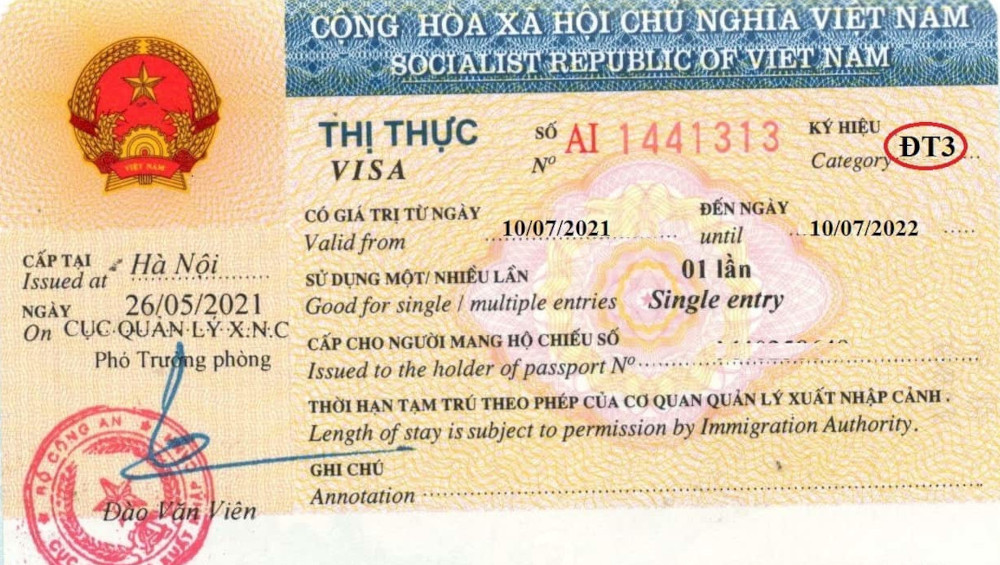
Only citizens of certain countries can visit Vietnam without an entry visa and those countries include: UK, Germany, France, Italy, Spain, Belarus, Norway, Sweden, Denmark, Finland, South Korea, Japan and ASEAN countries.
Other citizens are required to get Vietnam Visa OR can get Vietnam E-Visa(*) by the below link: https://evisa.gov.vn
List of the countries that allowed to apply & get the Vietnam E-Visa(*)
Normally, it will take some working days to issue the E-Visa but you should apply the E-Visa around 30 days before you fly to Vietnam. Besides that, when you start to apply or after receiving your E-Visa, kindly take time to double check and make sure all the information in the E-Visa are exactly with the information in your passport and in your flight ticket (Ex: full names, number of passport, date of expiry, date of birth, gender, period of entry Vietnam*, name of airport/city when entering Vietnam*, etc)
If Vietnam E-Visa is not the same 100% with the passport information. At the airport for flying to Vietnam, the customs may NOT let the tourists do the check-in for the flight to Vietnam. We want to remind you carefully about this issue because we have encountered several cases where customers could not fly to Vietnam on the correct date as their travel plan, even though we reminded them very carefully, few people still made mistakes such as wrong time of arrival in Vietnam, wrong passport number or incorrect full name, etc.
=>So, please make sure all information in the passport and E-Visa are the same 100%)
Tips for applying Vietnam E-Visa quickly and correctly
When applying for your E-Visa, you will need to send your passport photo and your card image to the customs.
-You can use a smartphone to take your passport photo and make sure the passport photo is clear, in color, not blurry, and shows all the information of your passport on this photo.
-You can stand behind a white wall and use a smartphone to take your card image. Your card image must be in color, clear and polite.
–Period of entry Vietnam*: On your flight ticket and if it shows you will enter Vietnam on 10 Jan 2026, then when applying, you will write 10 Jan 2026 or it is better to write 1, 2 days early at 08 or 09 Jan 2026
–Name of airport/city when entering Vietnam*: On your flight ticket and if it shows you will enter “Hanoi”, then when you fill the information on the E-Visa about the arrival city/destination, you must write: “Hanoi”
3.Popular local foods in Vietnam
Bun Cha
Bun Cha is the ideal fusion of sour, salty, sweet, and spicy flavors. Only three components make up the dish of Bun Cha: roasted pork, chewy vermicelli, and sweet and sour sauce. The taste is not basic, despite the simplicity of the components. When being served, the roasted pork and rice noodles fall apart since the latter will cling collectively while the former will do naturally in the soup.
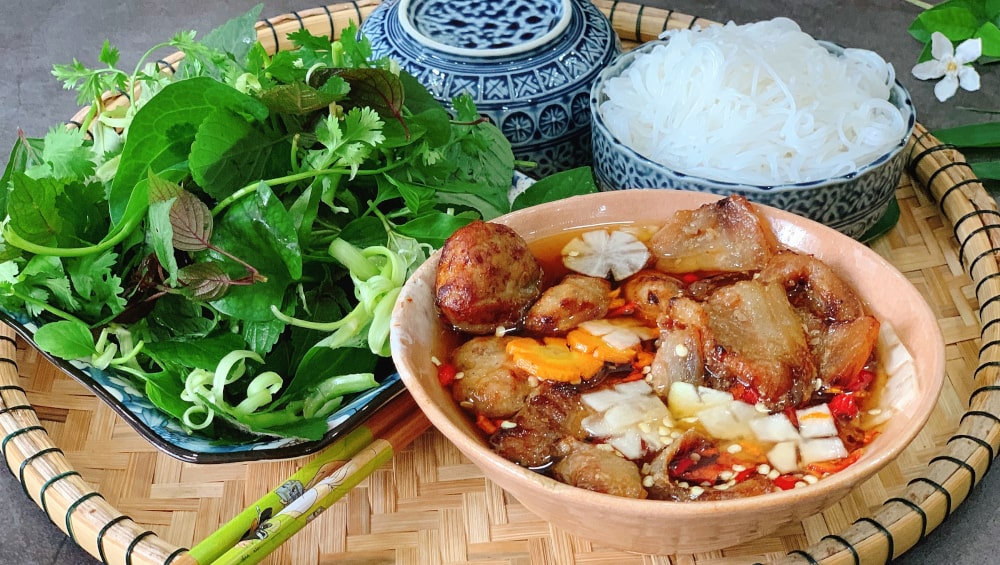
Goi Cuon
Vietnamese fresh spring rolls, or goi cuon, are among the most well-known and delicious meals here. People utilize sticky rice to make the transparent spring roll out-layer, then fill it with bean sprouts, pork, shrimp, spring onions, vermicelli, eggs, and other ingredients. When you enjoy it with a sauce made from chili, fish sauce, garlic cloves, you will taste it much better.

Pho
Vietnamese Pho is perhaps the country’s most traditional and emblematic dish. High-quality rice is utilized to make fresh rice noodles, which are then seasoned and served with beef or chicken and several types of coriander. Fresh veggies like bean sprouts, mint, lettuce, and houttuynia are all gratis side dishes that the residents like pairing with their delectable Pho.

Cha Ca La Vong
Whitefish pieces seasoned in galangal and turmeric are grilled to create the popular Hanoi meal known as Cha Ca La Vong. Putting the fish on the standard charcoal burner, the crisp, delicate chunks of fish and the lush green onions sizzle and fry. Typically, a mixture of fish sauce, vanilla flavor, rice vermicelli, and nuts are eaten with the fried golden-colored fish chunks.

Banh Mi
Following pho, Banh Mi is ranked as the second most popular food. To increase the taste of the Banh Mi, the Vietnamese utilized sticky rice noodles made in their own country. Before eating, the Banh Mi was briefly toasted on a charcoal fire, sliced in half, and filled with Vietnamese beef, pig skin, fermented cucumber, and other ingredients. Then they are covered with mayonnaise or tomato sauce and chili sauce. You can buy Banh Mi in Vietnam’s laneways and streets.
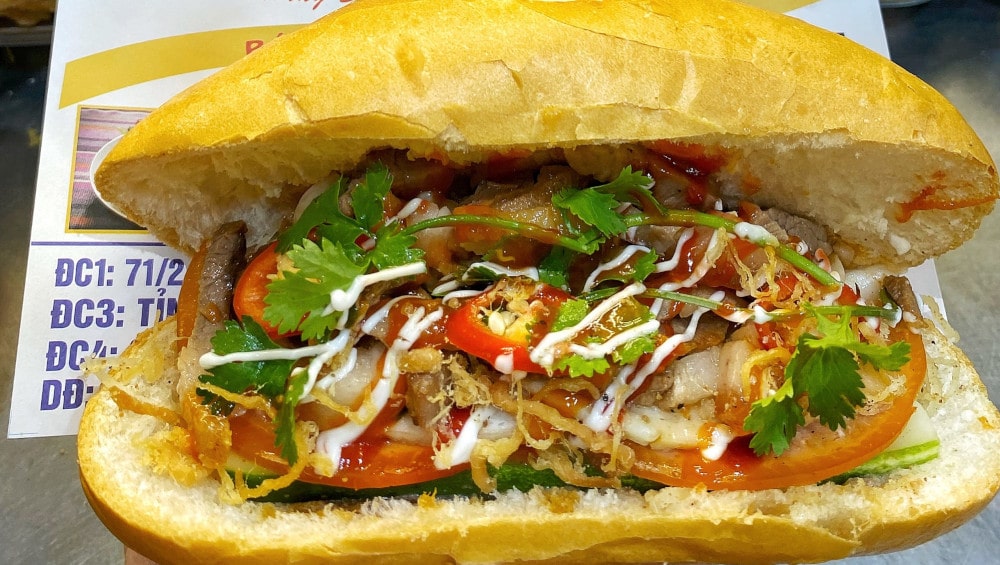
Bun Dau Mam Tom
Bun Dau Mam Tom is a dish of deep-fried tofu, thin rice flour, cucumber, and fresh herbs. Additionally, fermented shrimp paste, or Mam Tom, is used to serve this regional delicacy. It is a special dish and is a bit picky. When eating shrimp paste, you should squeeze a few kumquats and chilli peppers and stir until foamy which is called a real delicious Bun Dau Mam Tom meal.

Banh Xeo
The Vietnamese enjoy the native delicacy known as Banh Xeo, or pancake in English. On-site cooks often make Banh Xeo in several minutes. In a pan of heated oil, a thin layer of dough consisting of rice flour, water, and turmeric is cooked before being topped with a combination of thinly sliced pork belly, shrimp, onion, and bean sprouts. After a few minutes of cooking, fold in half and top with lettuce leaves and sweet chili fish sauce. Then you can enjoy it with the green vegetarian and the special sauce.
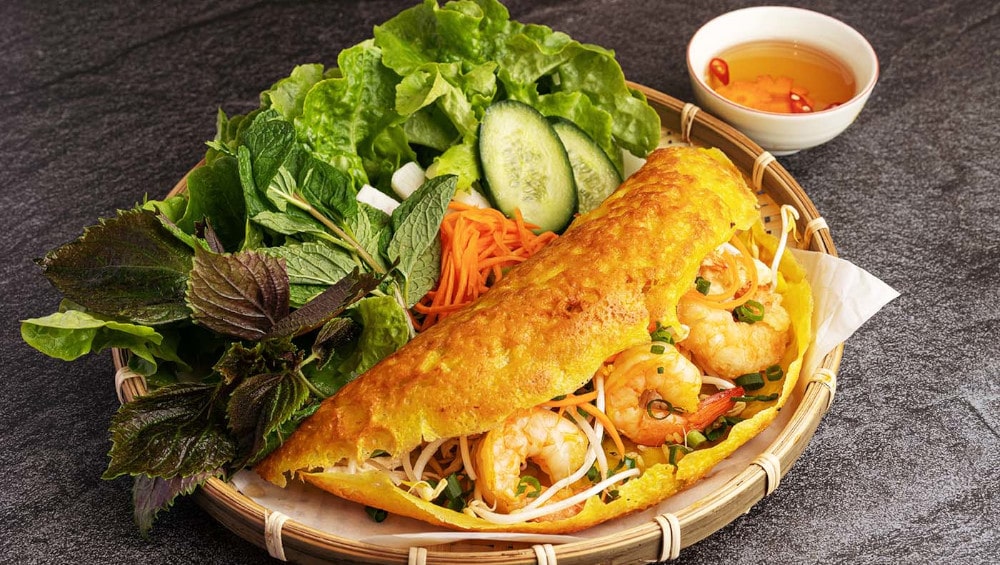
Mi Quang
The meal known as Mi Quang, or Vietnamese Turmeric Noodles, is a must-try when visiting Hoi An. Mi Quang gets its name from the region of Quang Nam, where it is located. The ingredients for Mi Quang include golden turmeric noodle dishes, fish-bone broth, a few prawns, black pepper, shallots, and garlic, and it is garnished with a variety of meats, herbs, and regional green vegetables.

4.Do’s and Don’ts in Vietnam
Planning is an essential part of any trip, and like everywhere, there are few things you need to know before visiting Vietnam – especially if you are a first-time visitor or even taking a Vietnam Tour Packages through a local tour company. Although you do not need to worry much when traveling in Vietnam, it is better to know a few things about your new destination. To help you plan a perfect trip, here are some travel tips to make your trip easy so that you will have more time to enjoy this beautiful country!
Wear proper clothing
If you plan to visit the Pagodas, Temples or Mausoleum, you need to dress modestly and politely. Do not wear shorts, short skirts above the knee, or revealing clothing. And especially do not bring the following items to visit the Ho Chi Minh Mausoleum: food, drinks, lighters, electronic cigarettes, and sharp objects.
Underestimate the time on the road
In a country where there are many private vehicles and especially many motorbikes on the road, at peak hours, Hanoi or Ho Chi Minh City are infamous for their congested roads. So, to avoid delays like missed flights, especially for the international flights, we would suggest taking a cab hours before, calculating the traffic time.
Don’t drink homemade or unlabeled alcohol
When you are in Vietnam, should not drink any homemade or unlabeled alcohol, it may contain harmful substances, particularly methanol.
Carefully see the VND 20,000 and VND 500,000
The national currency of Vietnam is Dong (VND). In particular, 2 types of bills 20,000 VND (around 0.8 USD) and 500,000 VND (around 20 USD) are blue and look quite similar, local people sometimes still be mistaken if they don’t look carefully, especially if they see those bills in the evening. Therefore, you should carefully see these two types of bills when shopping in Vietnam.
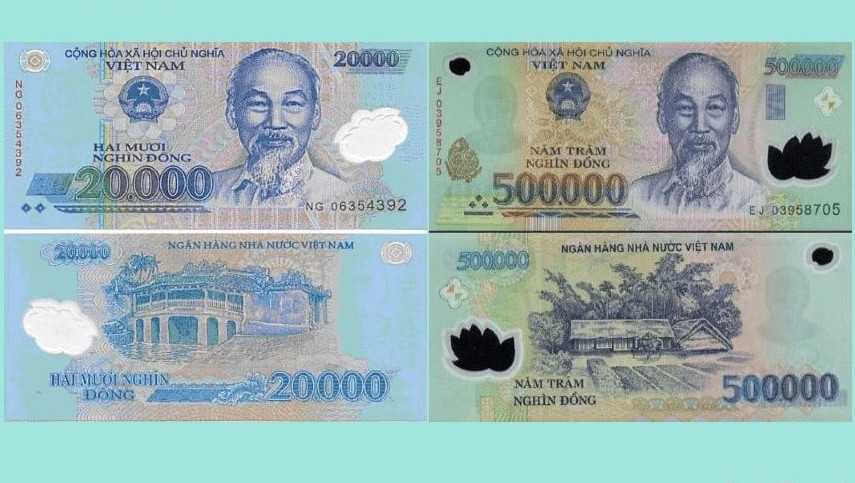
Avoid travelling to Vietnam on TET
Vietnam’s biggest holiday of the year is TET (Vietnamese new year or Lunar new year). At that time, the Vietnamese people will take a break from their work and go home to celebrate the new year with their family. Therefore, most of the inbound tourist sightseeing places will be closed at that time, so that you should avoid traveling to Vietnam on TET. Normally, TET will be in late January or early February every year and that holiday has around 4 days off.
No need to get a local mobile sim card
Wi-Fi networks are covered and widely used in Vietnam and other countries in Indochina, especially in the hotel, restaurant, cafe, shop… Therefore, in our opinion, when taking a tour to Vietnam or a Vietnam & Cambodia Combined Tours or Vietnam & Thailand Combined Tours, it is not necessary to buy a sim card here, you just use the Wi-Fi then you are able to contact other people.
Vietnam is a developing country but everyone is millionaire here
Have you ever wondered how it feels to be a billionaire? Traveling to Vietnam will let you realize this dream. The exchange rates between Vietnamese Dong (VND) and USD is around: 1 USD = 25,000 VND
That means with only 40 USD -> You are already a millionaire in Vietnam when you have one billion VND in hand.
Bring enough cash with you
Although online payment is becoming common and most of the hotels, shops and restaurants accept credit cards, cash is still King in Vietnam, so you should carry some cash with you when going out, especially if you shop at the local market or eat at a casual restaurant.
How to cross the road?
Hanoi or Ho Chi Minh City, you will witness a lot of people riding their motorbikes on the streets. At some point, you have to cross the road where there is no pedestrian crossing. But even at the pedestrian crossing, you still find it very hard to cross the road because some motorcyclists still keep their speed and do not yield to pedestrians. Don’t worry, when you start walking, remember to walk slowly when crossing the road, motorbikes will go around and get out of your way. You should also raise your arm to let them know that you are crossing the street. At the intersection with a traffic light, when the light is red, it does not mean that the traffic will stop, some motorcyclists may still drive their motorbikes, so you should look carefully before crossing the street.
Learn few popular Vietnamese phrase
English is popular and used in the Popular Destinations in Vietnam but most Vietnamese people do not speak English. Therefore, knowing some common Vietnamese sentences will make your trip more enjoyable and easier: Hello => Xin chào ; Goodbye => Tạm biệt ; Thank you => Cám ơn ; Bill please => Tính tiền ; Please => Làm ơn ; Yes => Đúng ; No => Không ; How much is it? => Bao nhiêu tiền?
Street vendor photo scam
Street vendors in Hanoi or Ho Chi Minh City often choose the foreigner as their target. Not all but many of them invite you to take pictures with their belongings, after taking the photo, they will ask you to pay the fee. If the tourists refuse to pay, they will follow you until you buy something or get some money from you. Therefore, when meeting these people, you should politely decline their offer, if the vendors are still stubborn, you just need to stay away from them.
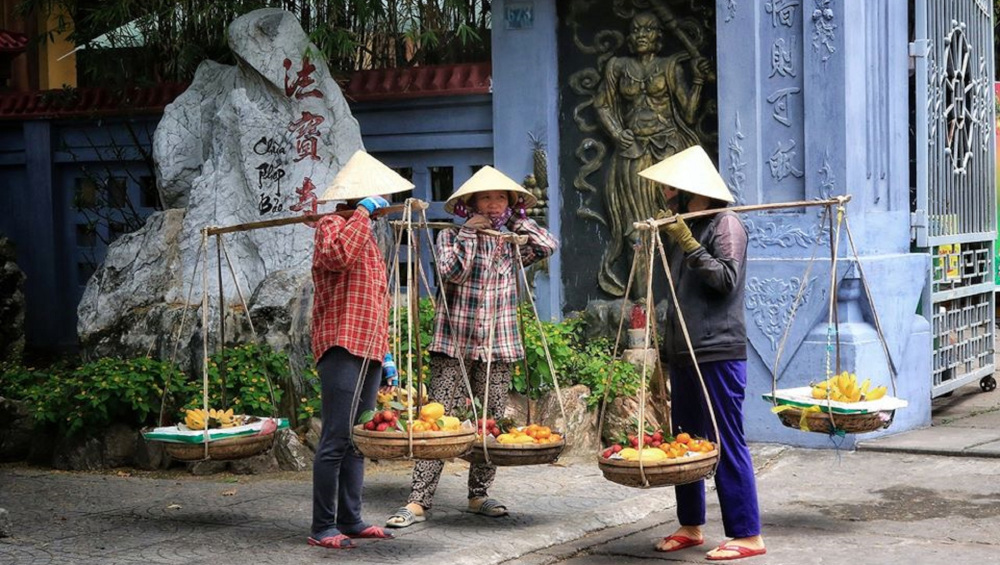
You might need to bring a travel adapter
The standard voltage in Vietnam is 220V with frequency of 50Hz and ordinary plugs are A (2 vertical pins), C (2 round pins) and F (Schuko plug). In case your electronic device has a 3-pin power plug, you should bring a travel adapter.
Bargain when you buy at a small store or on the street
If you choose to buy a product that already has a price on it, the seller may not reduce their price, but if you see no price on that product, you should negotiate with the seller, especially in the small shop or shopping on the street. The experience is that you should pay 40-50% of the price they quote you. If that doesn’t work, you can try elsewhere or sham to walk away and come back to buy for them later.
Prevention of robbery motorbikes
The phenomenon of robbery from motorcyclists in big cities like Saigon or Hanoi is quite common for both locals and foreigners. When walking on the road, you should be careful with your belongings such as mobile phone, camera, money, necklace, etc. The robbers on motorbikes from the back can run very quickly to rob and endanger you.
Use Grab or Xanh SM, not Taxi
In Vietnam and when traveling by Grab or Xanh SM, you have more benefits than a Taxi:
-Price is available before you book the car/motorbike
-Drivers don’t trick you by going other ways which are further away so that they can get more money from you.
-Grap or Xanh SM cars are always new and smell better than a taxi.
Tipping
-If you take a Vietnam Private Tours with friends or a Vietnam Family Tours (2 – 6 members), tip can be around USD 5 /guest /day for the tour guide and USD 2 /guest /day for the driver.
-If your private group is from 7 people or more, tip can be around USD 3 /guest /day for the tour guide and USD 1 /guest /day for the driver.
-At the hotel or restaurant, you may tip the bellboy or waitress $1 per time. However, you might give tip to them more or less depending on their services.






